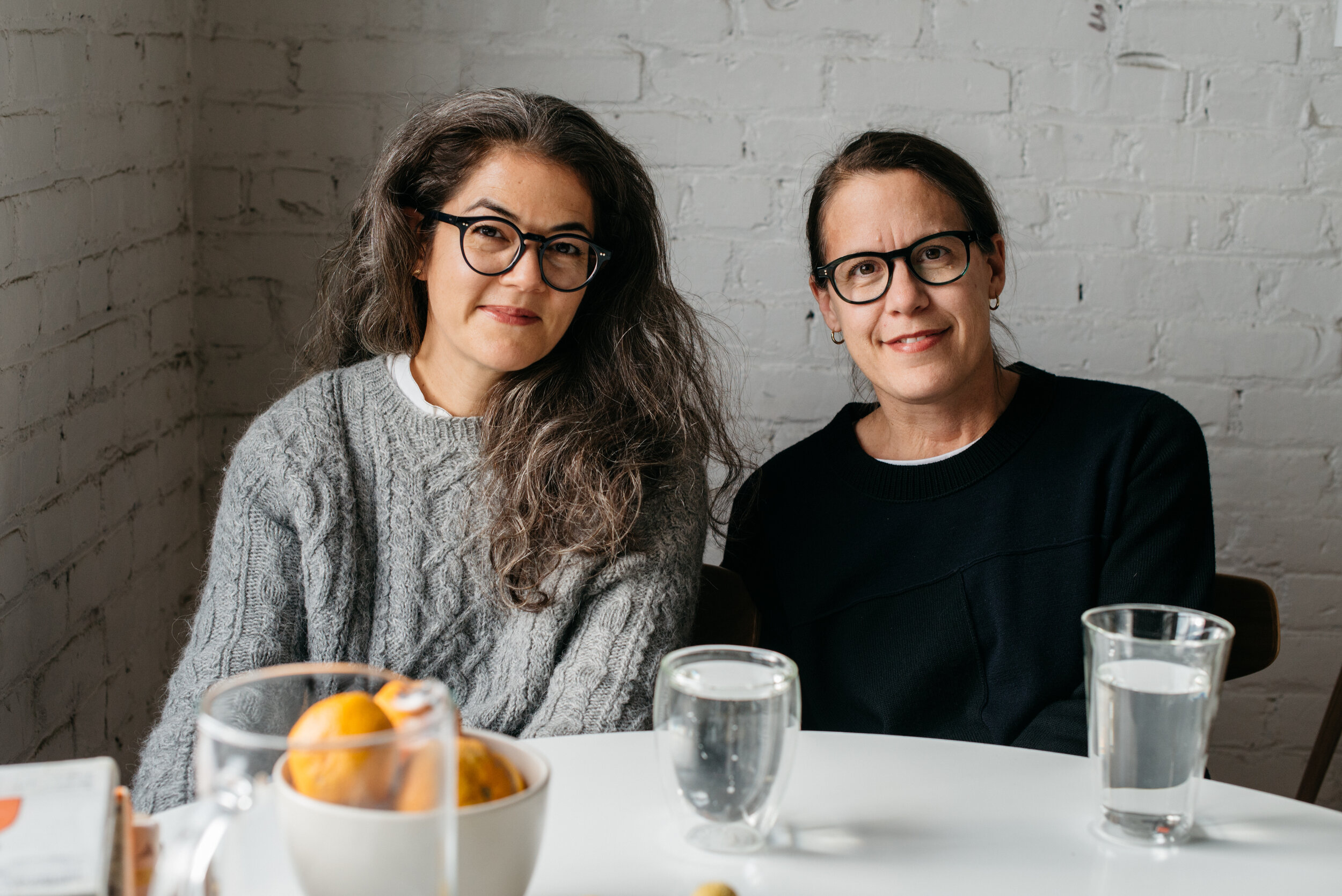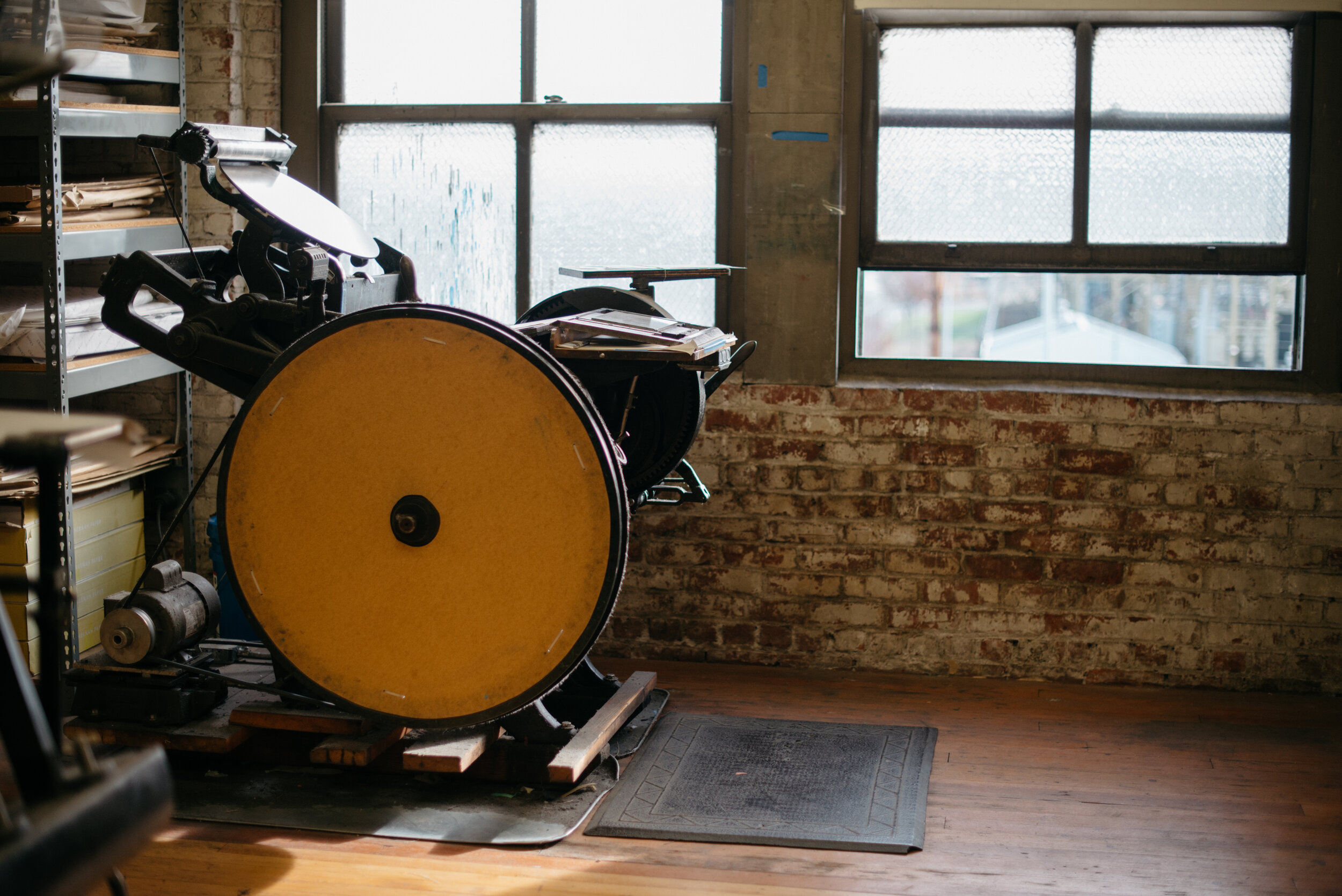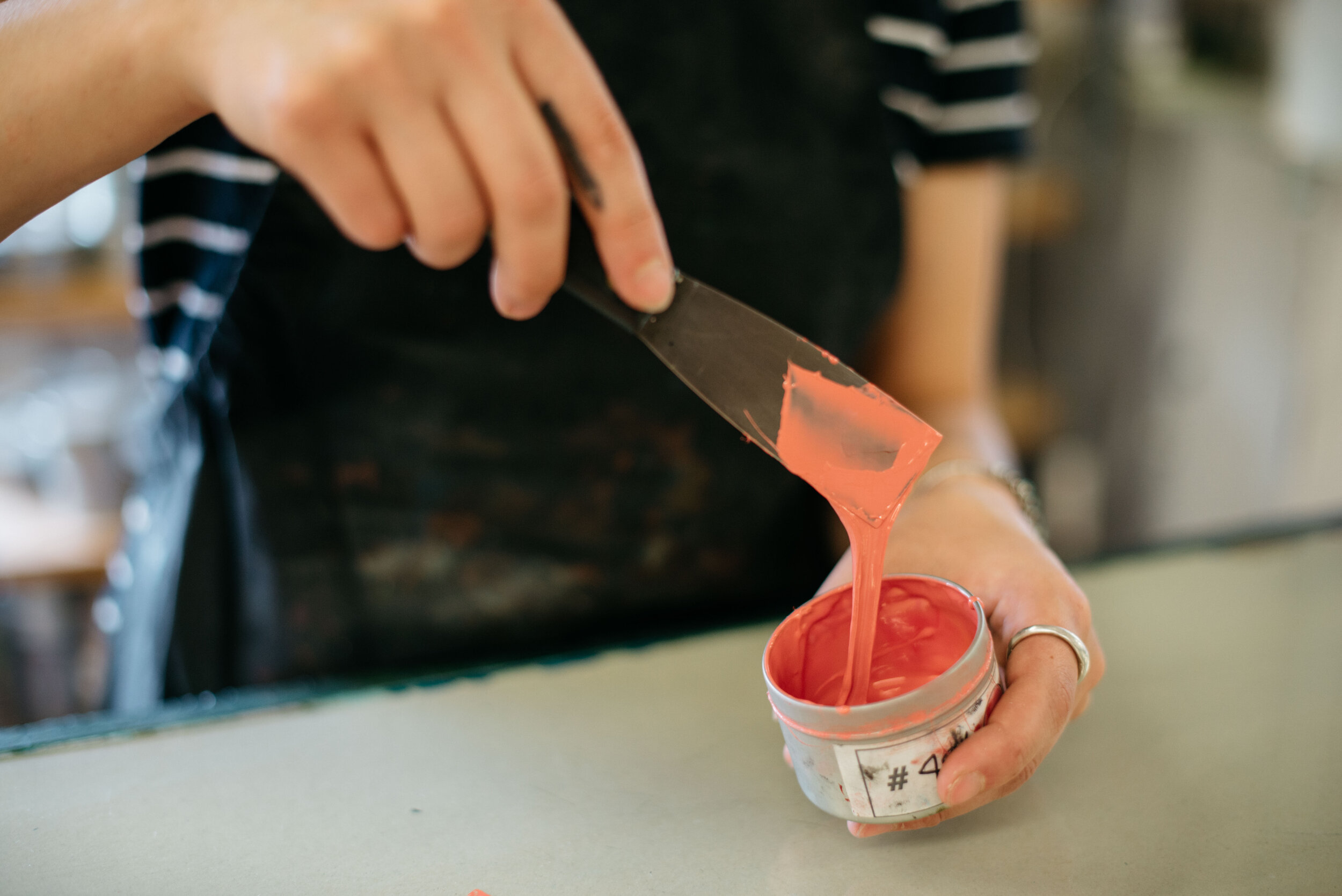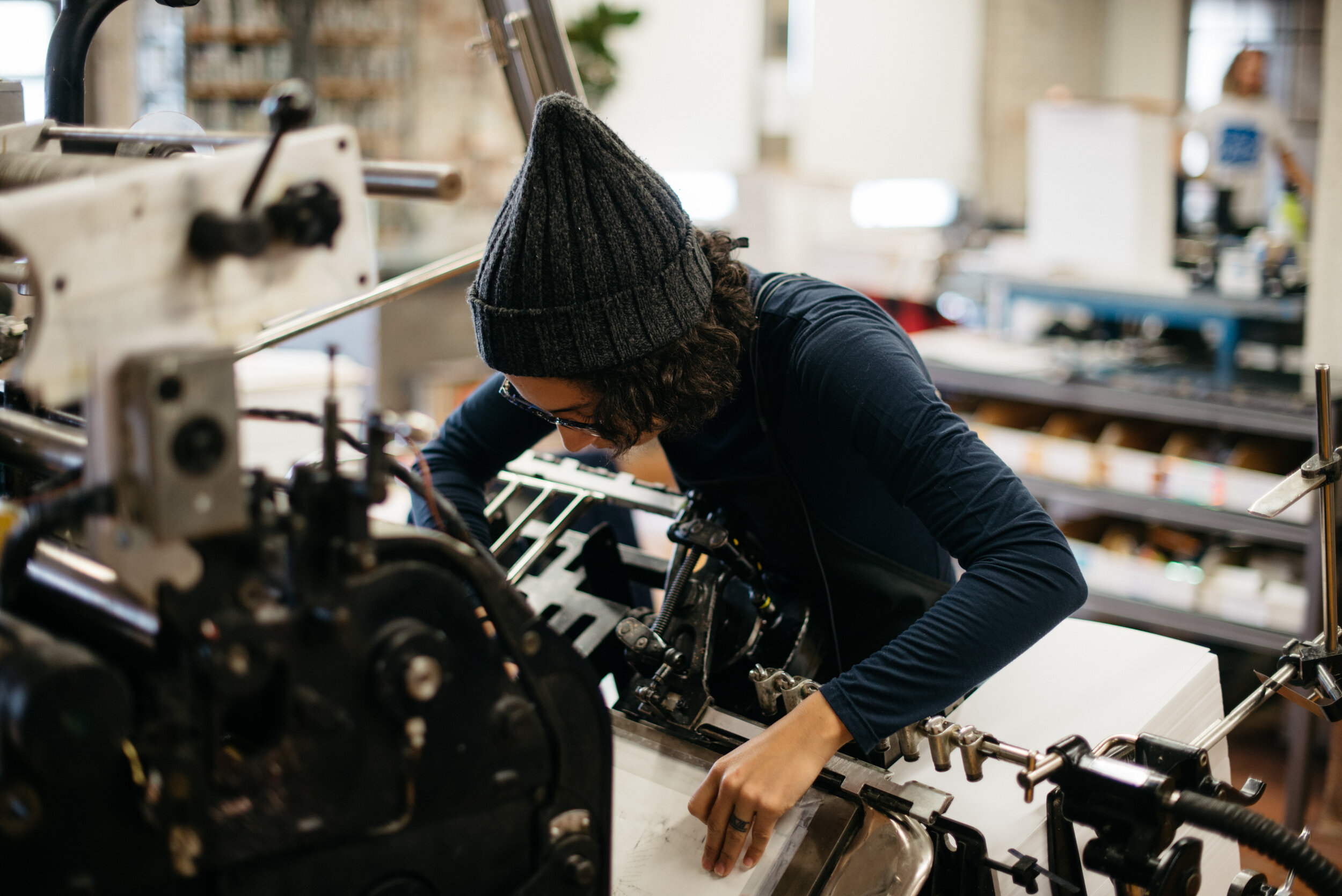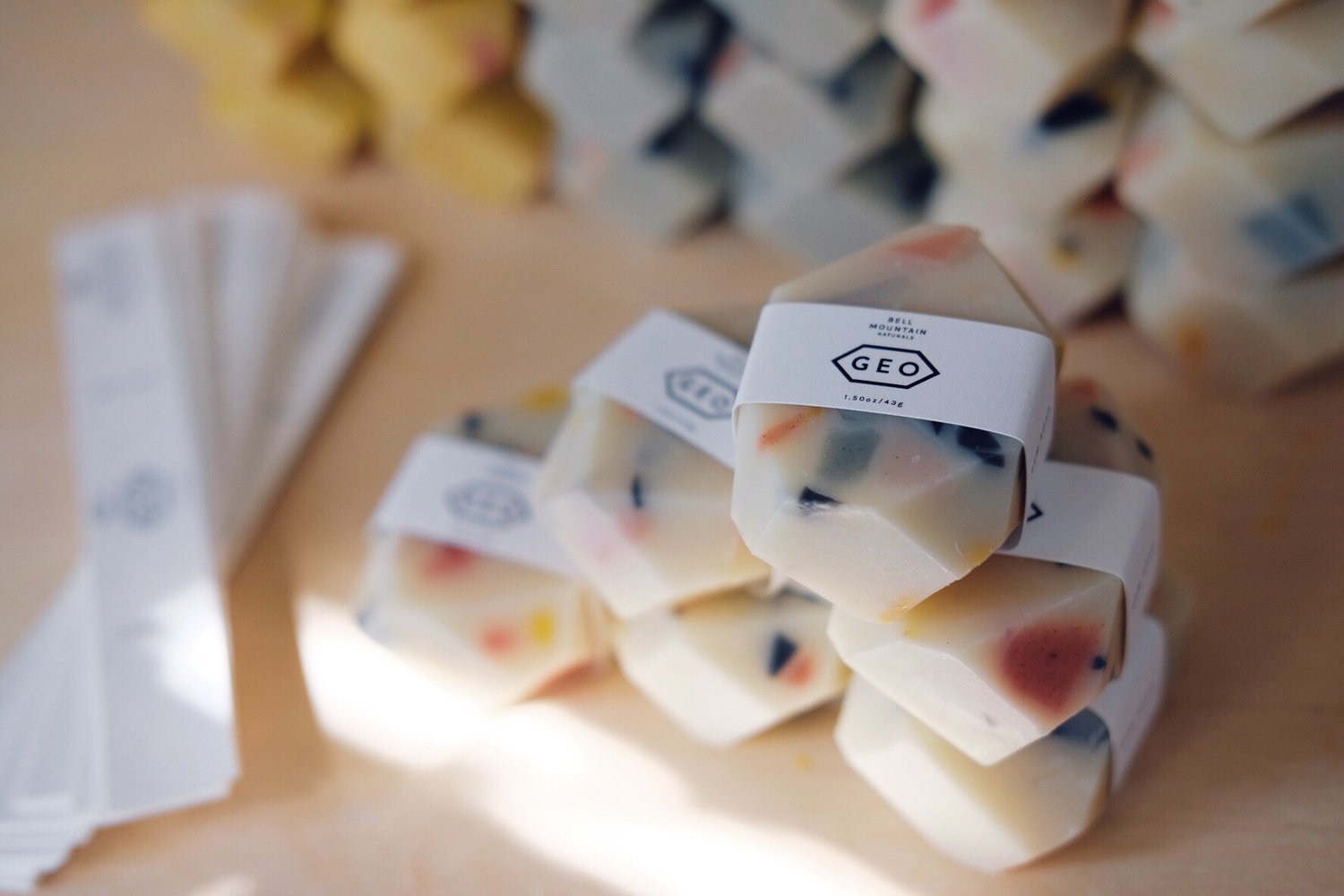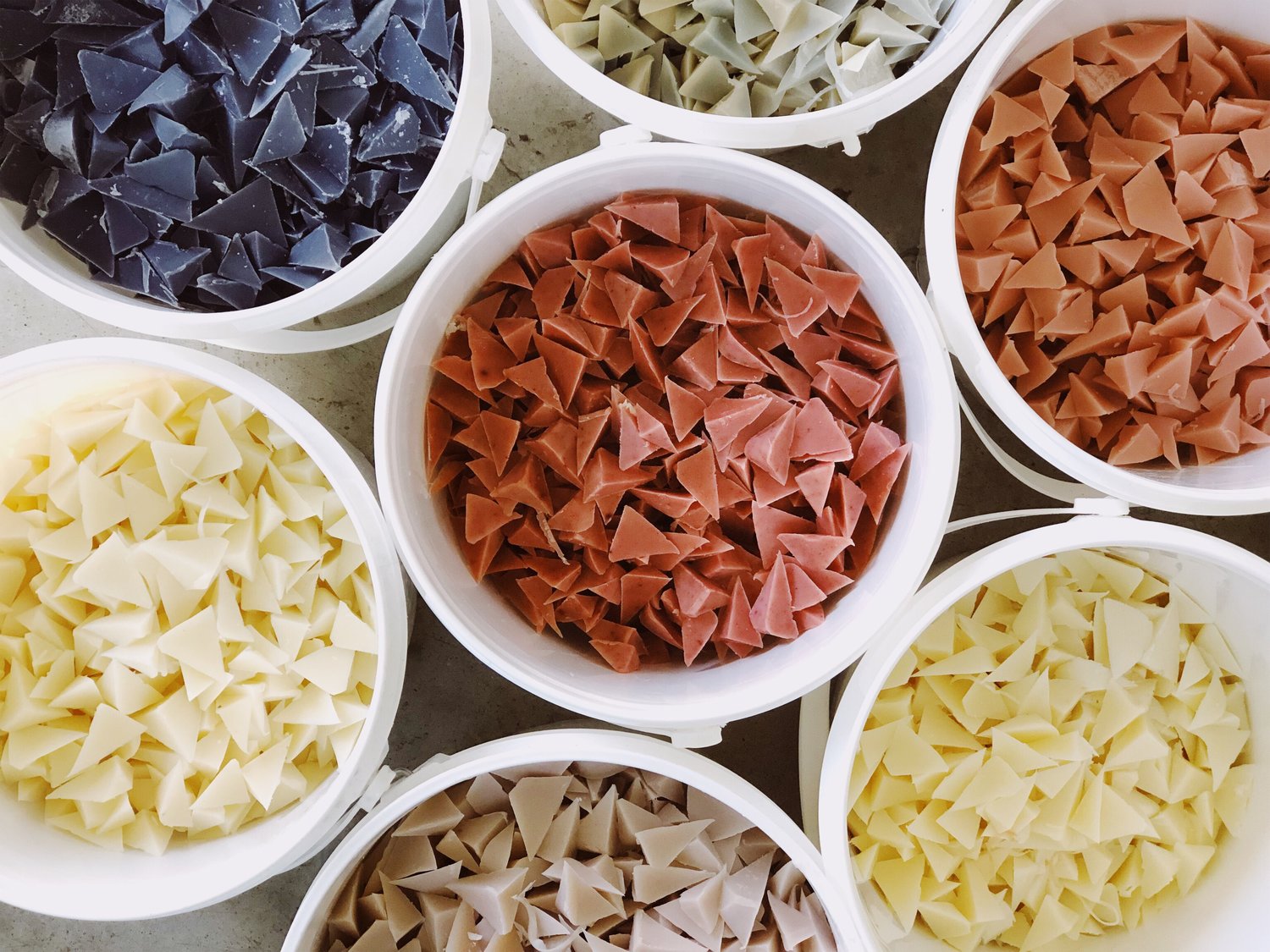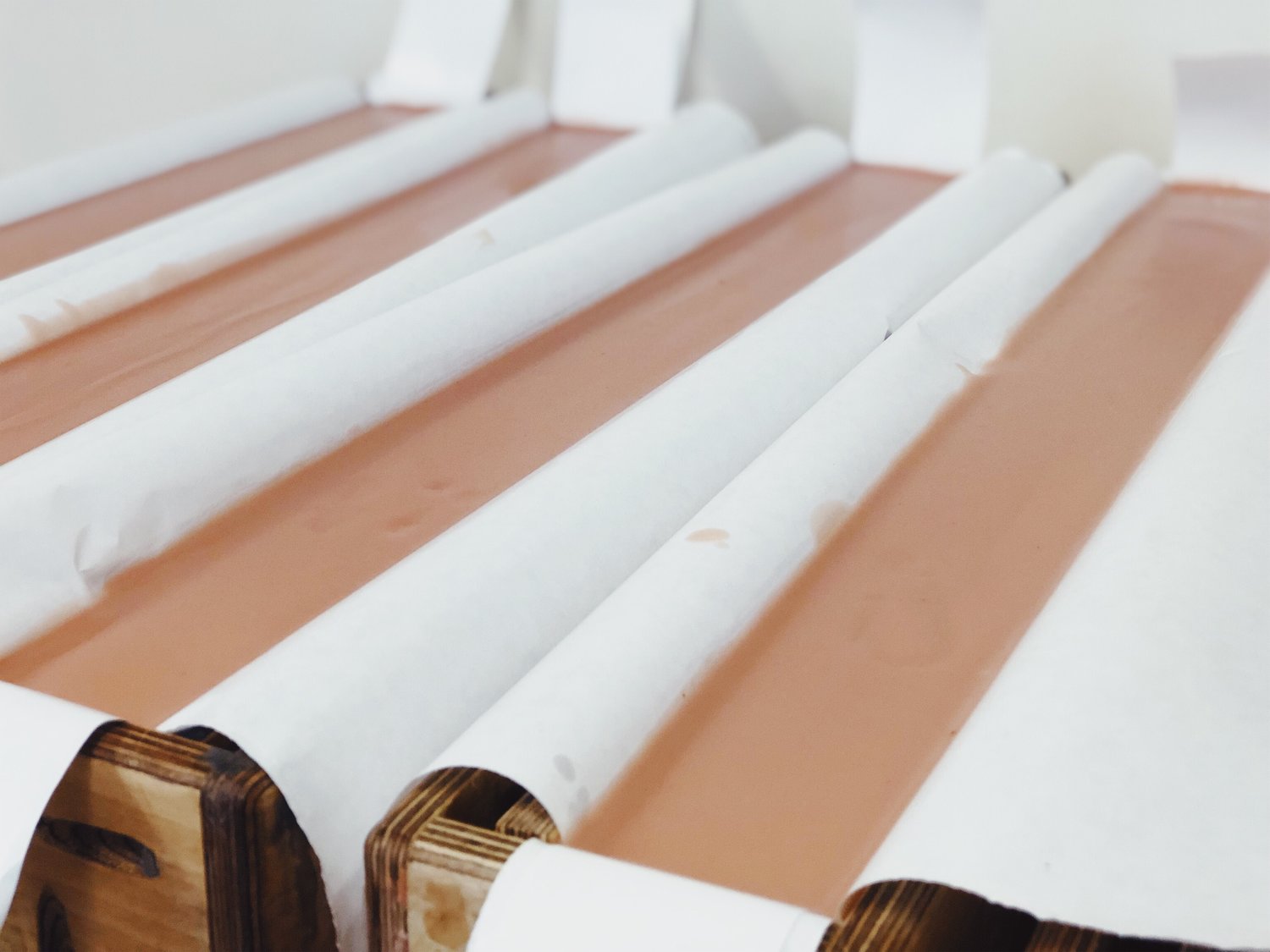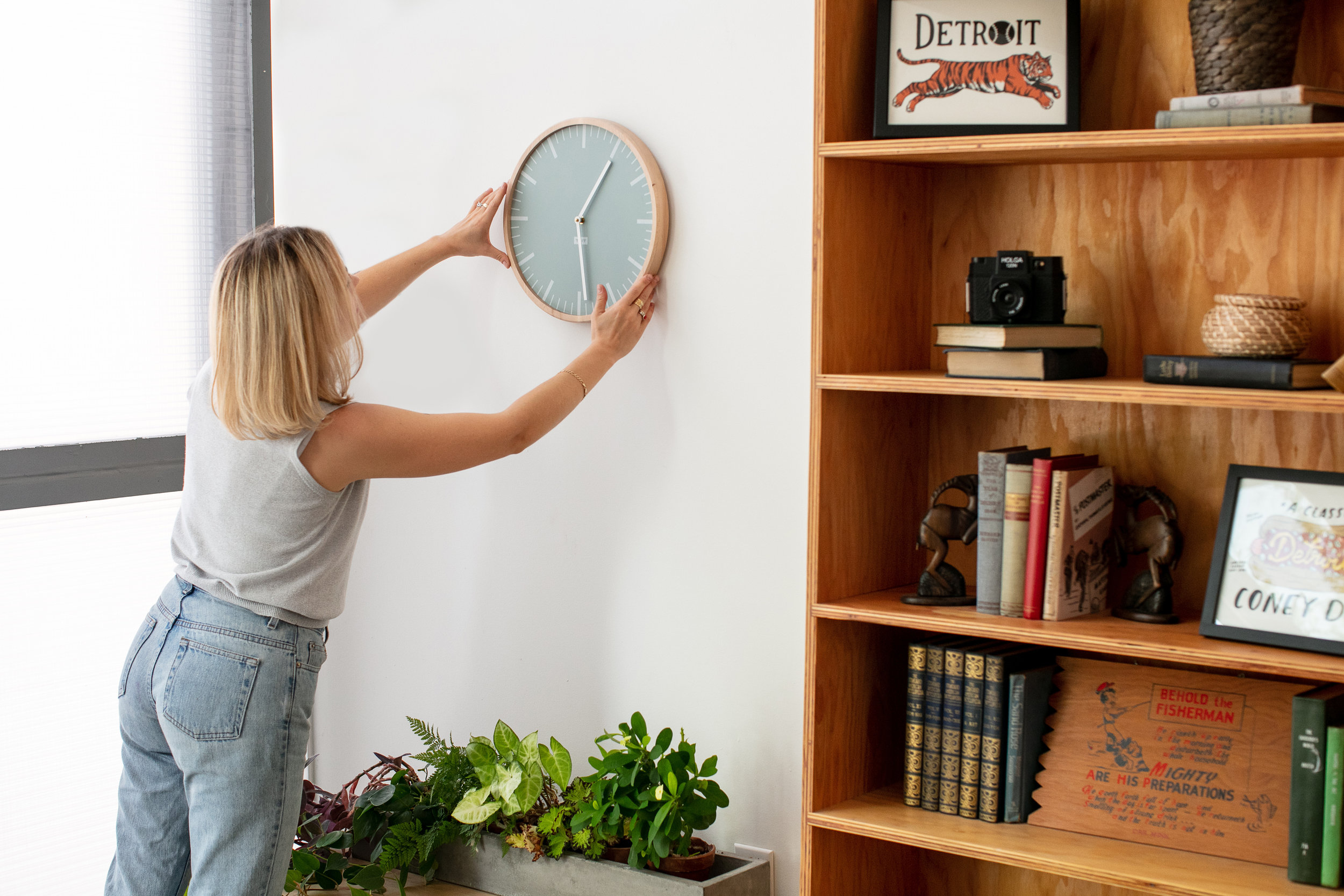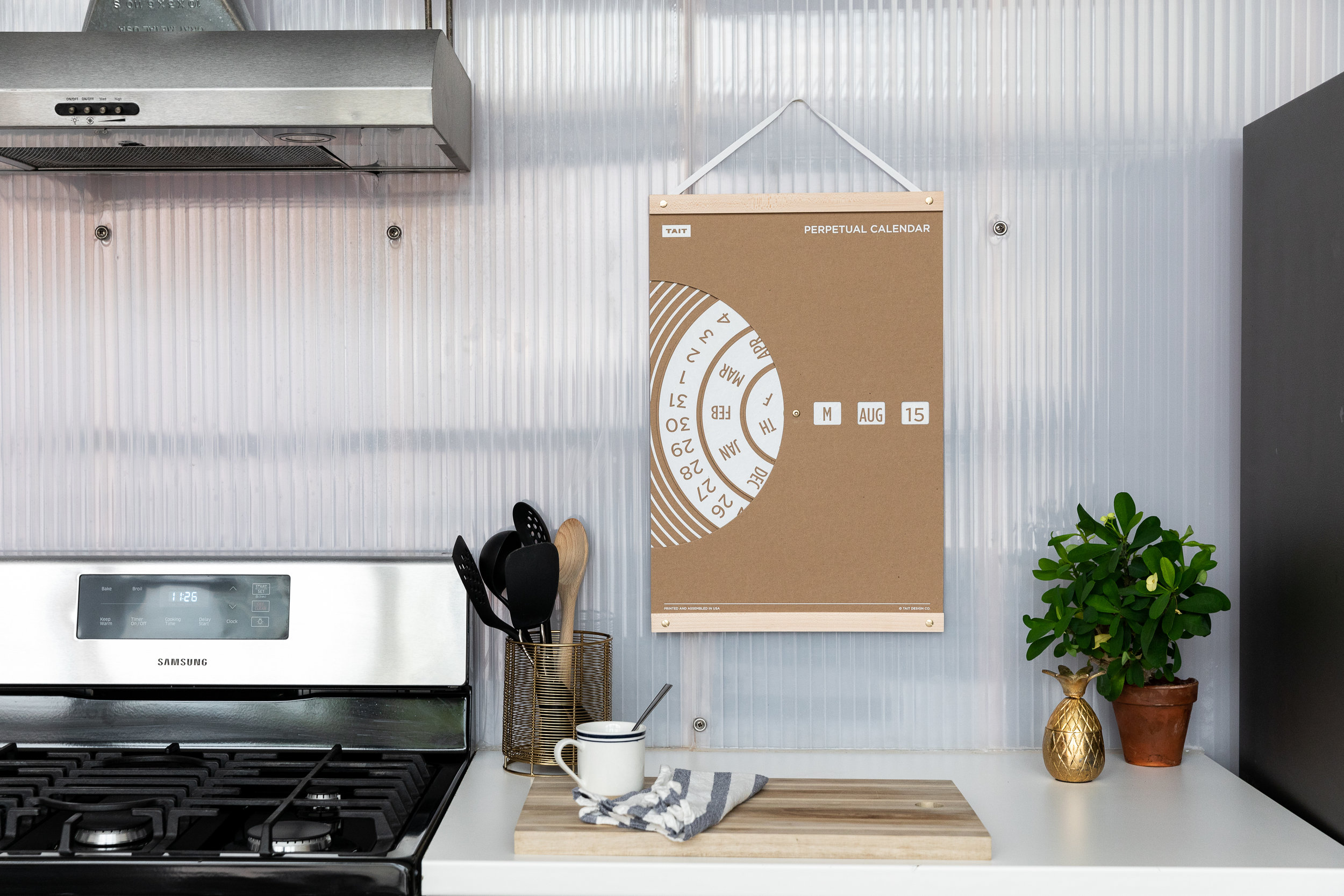This year, Portland-based greeting card manufacturer Egg Press is celebrating its 20th anniversary in business. And while most of life’s major events — marriage, childbirth, you name it — have taken place over that timespan for founder and co-creative director Tess Darrow, she confesses that much of her day-to-day still has the wonder and energy of when the company first started. “There are still many moments where we all feel the enthusiasm of a startup,” she says. “New cards, without fail, always produce the same feeling of excitement when they come off the press for the first time.”
Tess bought her first letterpress in 1994, and opened up Egg Press five years later, utilizing the design experience she acquired working for Nike to create unique, thoughtful greeting cards for all occasions. According to Tess, the market got noticeably more crowded in the mid-2000’s, but Egg Press stayed true to its core values and thrived, taking on licensing, manufacturing, and fulfillment duties for three additional stationery brands: HelloLucky, ASHKAHN, and 1973 Ltd.
Egg Press remains a steadfast champion of domestically designed and printed greeting cards. As the forces of outsourced mass-production and more intentional, small-batch goods battle it out, Tess hopes and believes that consumers will see the value in splurging ever so slightly for a card that is more personal and full of expression rather than settling for a grocery store throwaway.
Read our interview with Tess below.
Meet The Maker: Egg Press
S&A: Tess, Egg Press is celebrating its 20th anniversary this year. Congrats! How have things changed for you and EP since its beginnings in 1999?
T: I can’t believe it’s been 20 years. For Egg Press, it’s safe to say that every logistical detail, every procedure, every pie-in-the-sky idea has been hashed and rehashed since 1999. Not to mention the experience of many of life’s major milestones: marriage, house remodels, births, deaths and all the personal discoveries that come with those, including grey hair. But what is such a wonder is how much everything in a way still feels the same. There are still many moments where we all feel the enthusiasm of a startup. New cards, without fail, always produce the same feeling of excitement when they come off the press for the first time. And I still feel that we haven’t even scratched the surface when it comes to the possibilities that the letterpress medium presents. When I bought my first press in 1994, I was so blown away by all the subtle effects that the printing method has to offer. That hasn’t changed.
S&A: What shifts within the industry have you witnessed take place over the past 20 years, and how has EP adapted and evolved as a result?
T: When Egg Press opened its doors in 1999, I was applying what I knew from my background in textile design and combining it with my 5 years of experience working as a young designer at Nike. I loved the challenge of production, and really felt there was a huge aesthetic opportunity in the market for greeting cards that were less classic and old-fashioned in design. I’d not really seen anyone using letterpress to print allover patterns, and that got me going. About 5 years in, there were a ton of other small letterpress printers popping up, and soon the landscape was flooded with competition. My conviction is that so long as we are true to the Egg Press spirit and soul, without worrying what others are doing, we will persist and continue to be influential in the industry.
S&A: Tell us a little bit about what you do in your role as creative director. What influences your decision making process when determining which direction to take Egg Press creatively?
T: Kara and I have been designing the cards together for about 15 years now. The process is very organic, but it works. What’s also strange about our process is that we combine our efforts so much during design time that we don’t always know who designed what. At first, this seemed like a funny and inefficient way of doing things, but I’ve come to realize that it brings an energy that solo work doesn’t. We pay little attention to what’s happening in the industry, which maybe isn’t best practice, but I find that staying in our bubble during creative bursts is more happy and comfortable. We aren’t super intentional about where we go creatively, but I think that’s what makes it refreshing — we don’t overthink it.
S&A: You all handle licensing, manufacturing, and fulfillment for three other stationery brands, HelloLucky, ASHKAHN, and 1973 Ltd. Tell us a little bit more about what that all entails. How does each individual brand differ from Egg Press yet still represent EP's overarching core values?
T: Yes we do. We’ve been printing the Hello!Lucky line for over seven years, and have turned that into a model that works well for us and them. When we realized we had the capacity to print more volume and the infrastructure in place to do so, we took the leap and duplicated that model with the other two brands a couple of years ago. It’s great — we get to keep the presses running, consolidate resources with those brands, and they are able to free up some of their energy for other pursuits. We were careful to choose to work with brands that were complementary to ours, and for the most part it’s been a smooth process.
S&A: How do you encourage someone to check out a small, independent press who may still be buying all their birthday or special occasion cards from a more traditional big box store?
T: Early in the life of Egg Press, I was at a large chain store buying studio supplies. On the conveyor belt at checkout, the person ahead of me had several grocery items along with a handful of mass-produced, uninspired greeting cards, which were undoubtedly printed in China, and were priced just a smidge less than the retail price of Egg Press cards. That convinced me that I was doing the right thing, and that there was plenty of room in the U.S. for domestically made cards. I could even argue that there’s really no reason at all that any greeting card designed and sold in the U.S. should be manufactured overseas. It’s not an environmentally sustainable model, and often the product is underwhelming. In the world of fast fashion and overconsumption, at the very least greeting cards can and should be a small, affordable luxury that are designed and manufactured domestically. In the scheme of things, why save a dollar or two on something that is meant to be filled with thoughtfulness and personal expression. That’s where splurging is fun and won’t break the bank!
S&A: What other Portland-area makers and designers are you particularly fond of and would recommend we check out? Are there any specific locales around the city that serve as design inspiration for you?
T: Portland has many great neighborhoods, each with its own personality. We find inspiration everywhere – small boutiques on East Burnside, design shops on the West side, and plenty of funky vintage spots in NE, and we always find stacks of great things at Powell’s Books! And we are rich with Makers – we have amazing chocolatiers like Cloud Forest, we love the linens from Fernhill Studio, ceramics from Dina No, and bags from Chester Wallace, and we love Hello! Good Morning!
